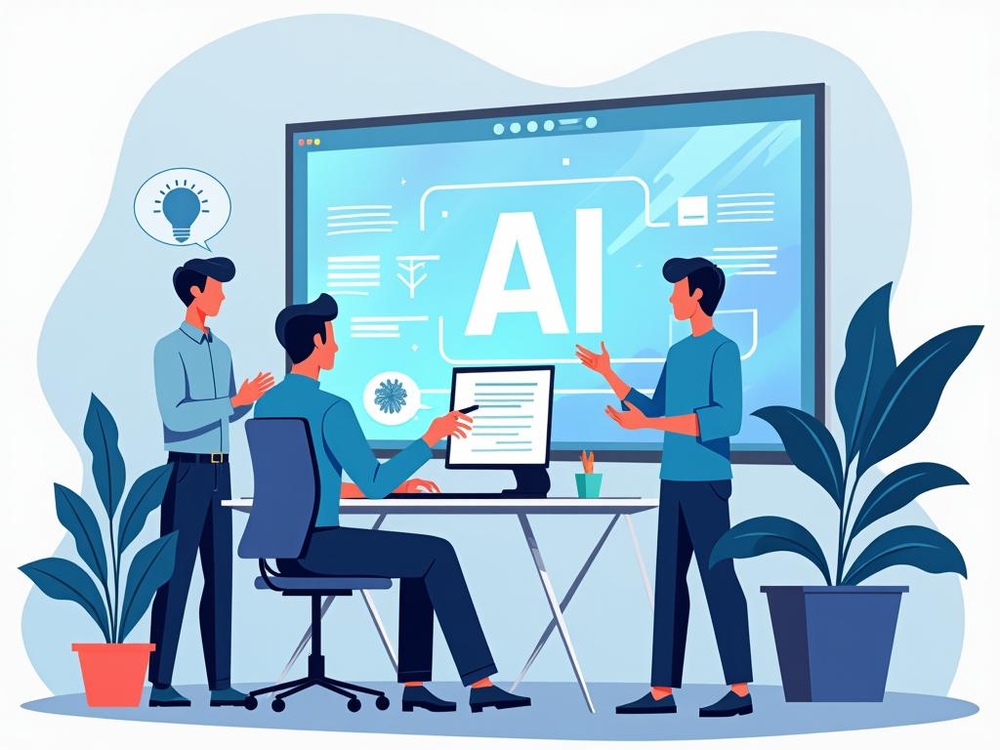Published
- 4 min read
Exploring the Future of Generative AI in Business

Gartner forecasts gen AI spending to hit $644B in 2025: what it means for enterprise IT leaders
Hey, listen up. We’re talking generative AI here. It’s not just another tech buzzword. This is a big deal, reshaping the economic scene. Businesses need to pay attention and plan wisely.
Look at the numbers. $644 billion on generative AI by 2025, with a 76.4% boost each year. That’s not small potatoes – it’s huge. It shows how companies are switching up their tech cash-flow.
The hardware reality check
Let’s get real. Hardware is taking the top spot in this AI wave. Here’s how the spending breaks down:
- Devices: $398.3 billion (99.5% growth)
- Servers: $180.6 billion (33.1% growth)
- Software: $37.2 billion (93.9% growth)
- Services: $27.8 billion (162.6% growth)
And here’s the twist. Hardware isn’t getting cheaper as we go. It’s actually ramping up. No surprise there. This boom is supply-driven, not driven by regular folks like us.
By 2027, finding a PC that isn’t AI-ready might be impossible. Remember how smartphones took off? Yep, it’s like that. Everything has AI now.
What companies are leading in AI technology?
Several big names are at the front of this AI charge. Companies like Google, Microsoft, and OpenAI are the put the pedal to the metal in generative AI. They’ve been pouring resources into R&D and coming up with mind-blowing advancements. They’ve got loads of cash and heaps of talent, so they’re pushing the tech boundaries.
On the flip side, newer companies are shaking things up too. Startups like Stability AI and Cohere are riding the wave, quickly climbing in the AI ranks. They lean into agility and innovation, packing breakthroughs into smaller teams. It keeps everyone else on their toes.
When proof of concept becomes proof of confusion
AI in business isn’t all roses. A lot of AI projects have hit snags. It’s messy. Three main hurdles are tripping them up:
- Crummy data: Many places find their data systems aren’t up to snuff for AI.
- People problems: Folks don’t always like change.
- Bad ROI: Figuring out the value of these projects is tough.
The strategic recalibration
Now, businesses are switching it up. They’re looking at buying commercial AI tech over making their own stuff. It’s about finding a sure path with fewer surprises.
This move shows smarts. Leaders get that AI is about growth, not quick fixes. Going commercial might deliver more bang for their buck.
How is AI changing business practices?
AI is shaking up business in a big way. It helps improve daily tasks and decision-making. In marketing, AI analyzes loads of customer data to personalize ads. This means better targeting and higher sales. In supply chains, AI predicts demand and spots hiccups early, avoiding disruptions. It saves time and cash, making things smooth.
AI’s smart thinking tackles complex tasks. It reads contracts fast in legal work, spotting issues that’d take folks forever. AI chatbots handle customer service 24/7, solving problems and answering questions without coffee breaks.
Charting the course forward
With AI moving fast, here are some things for business leaders to chew on:
- Keep hardware budgets ready for more spending.
- Data matters as much as tech when buying it.
- Commercial AI could be a shortcut to getting value.
- Redefine success beyond just ROI numbers.
Winners won’t be the ones flashing the biggest AI wallet. They’ll be those who fit AI spending to their setup. They know how to tackle common roadblocks and build a strategy that makes AI work for them.
Summary
This dive into generative AI is about keeping up with market shifts. It’s not just about spending, but about being smart with AI integration. Next, businesses should focus on aligning AI with overall goals. Use AI to enhance capabilities, not just because it’s the latest thing. Stay alert to new updates and keep innovating. That’s the key to staying ahead.